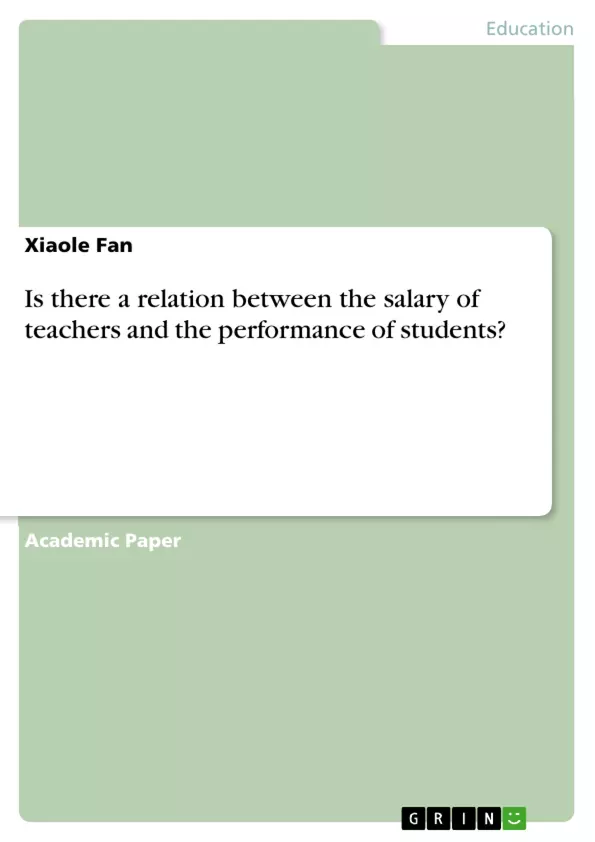For decades, researchers argued the relations between educational inputs and students outcomes. Some researchers argued there are positive relations between educational inputs and outcomes. Others revealed the relationship between educational inputs and student outcomes doesn't exist.
In the article, I will address the aforementioned argument by analysing the relations between upper secondary school teachers’ salary and PISA. Teachers’ salary is an important index for many researchers to evaluate the educational inputs. The PISA is an index that evaluates countries’ student's performance summarised by OECD, which is a famous data collection website.
I will utilise two quantitative research methods, time series graph and Pearson correlation coefficient to achieve my objectives. The sampling, data validity, details of the methodologies are mentioned in the following chapters. I will come up with a result which illustrates the statistical relations between educational inputs and outputs.
The process of the research can be considered as applying educational production function or cost-benefit analysis. Finally, I will provide implications of my research on education policy making. I doubted the validity of input-based policy based on the results of my research, while I provide guide and suggestions to educational policymakers.
Inhaltsverzeichnis (Table of Contents)
- Purpose
- Literature Review
- Method
- Questions/Expectations
- Relevance of data
- Implication
- References
Zielsetzung und Themenschwerpunkte (Objectives and Key Themes)
This article aims to analyze the relationship between teachers' salaries and student performance in upper secondary education schools in the United States. The study seeks to determine if variations in expenditure on teacher salaries lead to variations in student performance. The main objective is to investigate the validity of the "does money matter" question in the context of education, specifically focusing on teacher salary as an input and student performance as an output.
- The influence of educational inputs on student outcomes
- The relationship between teacher salary and student performance
- The effectiveness of expenditure-based educational policies
- The application of educational production function and cost-benefit analysis in education
- The implications of the findings for educational policy making
Zusammenfassung der Kapitel (Chapter Summaries)
- Purpose: This chapter introduces the research question, highlighting the debate among researchers regarding the correlation between educational inputs and outputs. The study focuses on teacher salary as a key input and PISA scores as a measure of student performance. The chapter outlines the research methods and the expected implications of the findings for policymakers.
- Literature Review: This chapter explores the concept of education production function as a tool to analyze productivity and return on investment in education. It examines different perspectives on the relationship between resources and school outcomes, summarizing findings from prominent researchers like Hanushek (1989) and Hedges, Laine, and Greenwald (1994) who have studied the correlation between educational inputs and outputs.
Schlüsselwörter (Keywords)
The key terms and focus topics in this text include educational inputs and outputs, teacher salary, student performance, PISA scores, education production function, cost-benefit analysis, educational policy, and the "does money matter" question in education.
- Quote paper
- Xiaole Fan (Author), 2017, Is there a relation between the salary of teachers and the performance of students?, Munich, GRIN Verlag, https://www.grin.com/document/377630



